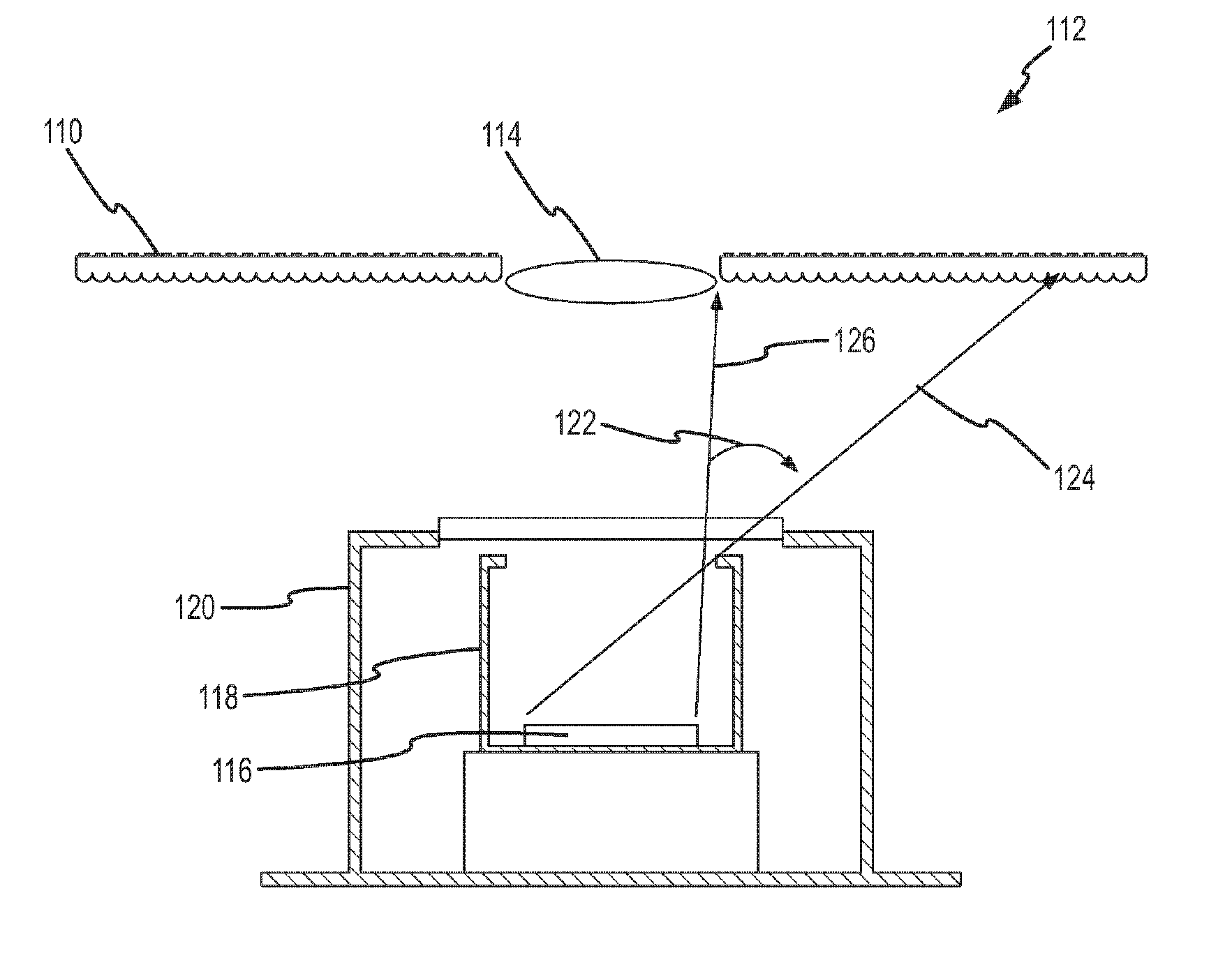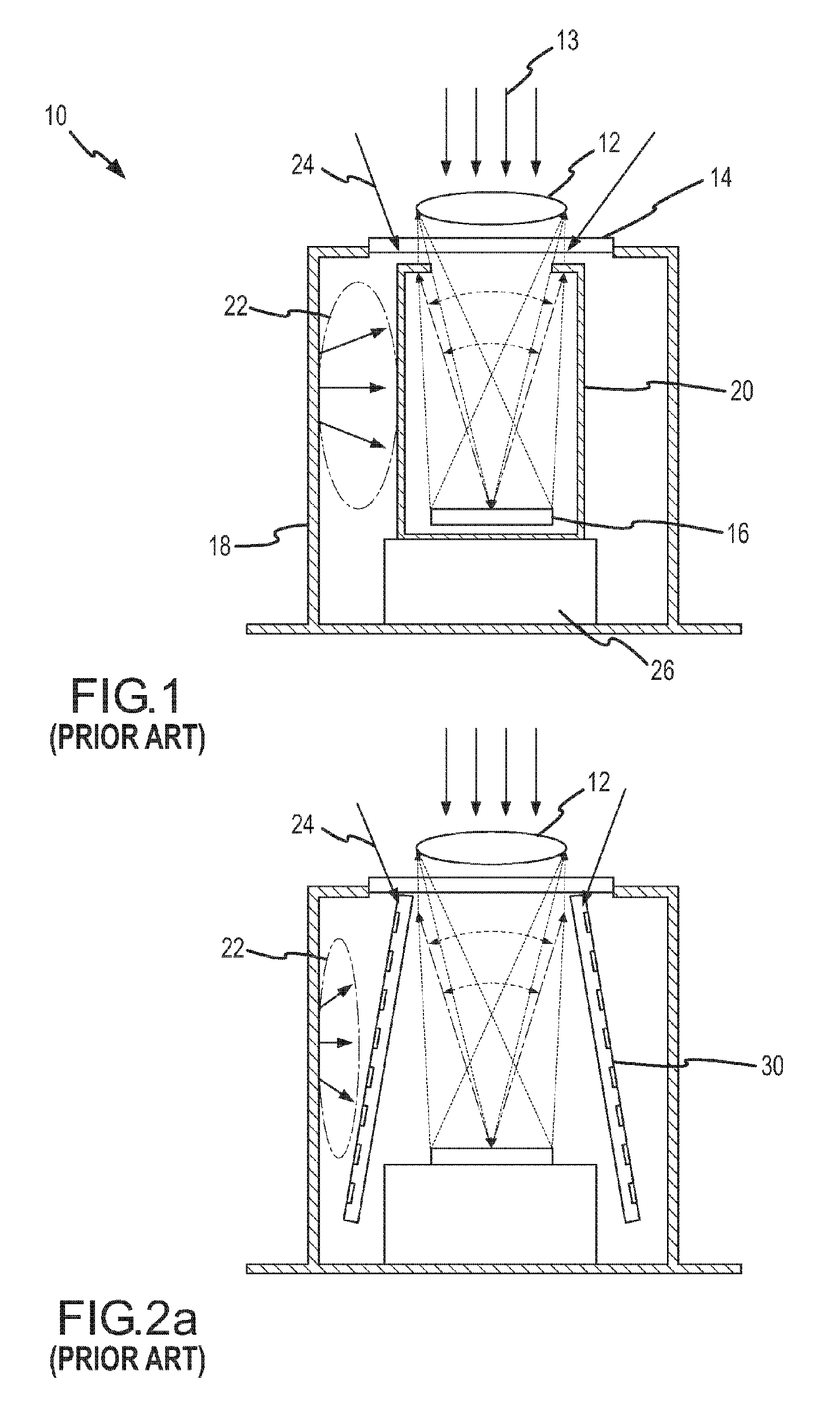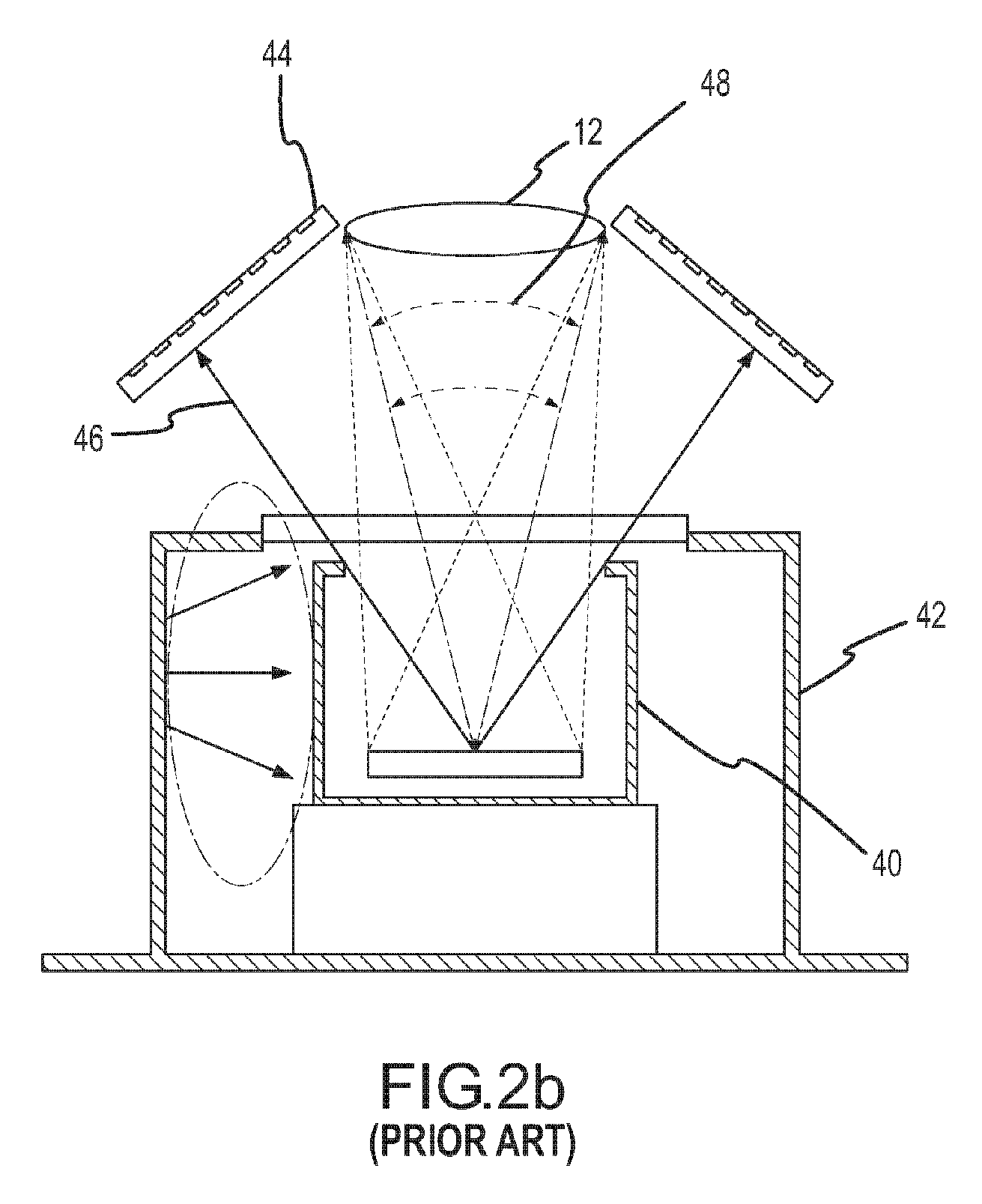Negative luminescence cold shield (NLCS) with microlenses to magnify the effective area of sparsely populated negative luminescence regions and method of fabrication
a negative luminescence and cold shield technology, applied in the field of cold shields for ir focal plane arrays, can solve the problems of limiting system performance, affecting device processing, and causing excessive noise, and reducing the effective area of sparsely populated negative luminescence regions, so as to reduce reduce the cost effect of nlcs , the effect of reducing the total diode area
- Summary
- Abstract
- Description
- Claims
- Application Information
AI Technical Summary
Benefits of technology
Problems solved by technology
Method used
Image
Examples
Embodiment Construction
[0027]The present invention provides a cost-effective NLCS and method of fabrication for reducing the total diode area with minimal effect on device processing.
[0028]As shown in FIGS. 4a and 4b, a NLCS 80 is sparsely populated with NL regions 81, each region consisting of one or more diodes 82 formed in NL semiconductor material 84-, e.g. MWIR or LWIR HgCdTe, InSb, PbSnTe, PbSnSe, InAsSb, MWIR or LWIR strained layer superlattice semiconductors, or any of a variety of MWIR and LWIR semiconductors known to those in the art, on an IR transparent substrate 86 with a refractive index n, suitably 2.7 to 4. The NL semiconductor material has a refractive index near that of the substrate sufficient to minimize interfacial reflections, <2% being typical. These NL regions may, for example, be formed using an epitaxial structure or by mounting a thinned NL semiconductor on a substrate.
[0029]The NL regions 81 are connected across the NLCS by a conducting layer 88 comprised preferably of a wider ...
PUM
 Login to View More
Login to View More Abstract
Description
Claims
Application Information
 Login to View More
Login to View More - R&D
- Intellectual Property
- Life Sciences
- Materials
- Tech Scout
- Unparalleled Data Quality
- Higher Quality Content
- 60% Fewer Hallucinations
Browse by: Latest US Patents, China's latest patents, Technical Efficacy Thesaurus, Application Domain, Technology Topic, Popular Technical Reports.
© 2025 PatSnap. All rights reserved.Legal|Privacy policy|Modern Slavery Act Transparency Statement|Sitemap|About US| Contact US: help@patsnap.com



